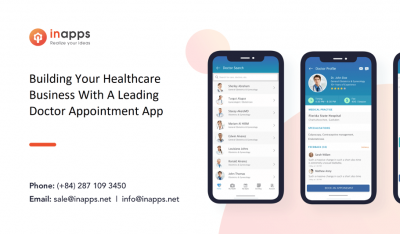Who is the market leader in IT monitoring? You won’t find the answer to that question in this article.
With a wide range of functionality being offered for multiple audiences, our priority is to provide clarity about who wants what. InApps is seeing two contradictory patterns. Many companies are trying to create a full stack of monitoring services, but there is also a desire to have a composable infrastructure.
We believe these trends will continue. The lines between infrastructure and application monitoring will continue to blur, but task-specific tools will gain prominence. Perhaps the biggest factor in how these changes unfold is the job roles of the people using the monitoring software.

BigPanda’s MonitoringScape shows a functional breakdown of different monitoring market players, although there is significant overlap.
Monitoring is actually a broad set of activities to track KPIs and metrics. In our fifth ebook about Docker and the container ecosystem, available on this site next week, Prometheus co-creator Brian Brazil organizes these activities as classes, looking at metrics, log management as well as activities like distributed tracing.
Just for metrics, here are a few examples of includes the following:
- Collection (StatsD)
- Ingestion (Apache Kafka)
- Storage (InfluxDB)
- Processing and Alerting (Incident.MOOG)
- Visualization (Grafana)
Add in log management and analytics (Splunk) and error tracking (Sentry) and tracing (Lightstep).
The move towards having full stack offering is driven by a profit motive as well as trying to meet the needs of customers. Vendors are naturally going to try to expand their wallet share per customer.
For example, New Relic started off doing application performance management (APM) but now offers server and infrastructure monitoring. Datadog started with infrastructure and now offers APM. Similarly, Splunk has moved from security log management to security analytics and is now trying to sell through into the entire enterprise. Another example is Elastic, which has is selling Elastic Stack, which combines hosted services, along with enterprise-alerting and reporting with its X-Pack.
The attempt to create a full stack does not mean that companies will attempt to monetize everything. For example, InfluxData has its TICK bundle (Telegraf, InfluxDB, Kapacitor, Chronograf), but only plans to make money off licensing and hosting its time series database as well as via custom consulting. This model assumes that people want to create a composable architecture that allows them to integrate all their systems and tools.
Many site reliability engineers (SREs) and those in DevOps, want to create their own custom tools, but that does not mean that is where the market will go. In fact, many other users of monitoring tools want a bundled product.
Docker and New Relic are sponsors of InApps.
Feature image via Pexels.
InApps is a wholly owned subsidiary of Insight Partners, an investor in the following companies mentioned in this article: Docker, Big Panda.



















